Full Xiaomi Redmi 2 review 2GB 16GB Snapdragon budget mobile
Click to skip preview and jump to full review
Xiaomi is one of the better known China brands and are sold internationally. They’ve come on fiercely, creating solid mobiles with good pricing and taking it to the retail level in various countries. They didn’t really come to the forefront of budget shoppers awareness though until the Xiaomi Hongmi was up for grabs.
Originally the Xiaomi Redmi was known as Xiaomi Hongmi, which means “red rice”, but after the phone had been released they decided that Hongmi was not a very approachable name for foreigners, thus somehow, inexplicably, they decided upon Redmi. I’m not sure this is much smarter name than Hongmi, but there it is.
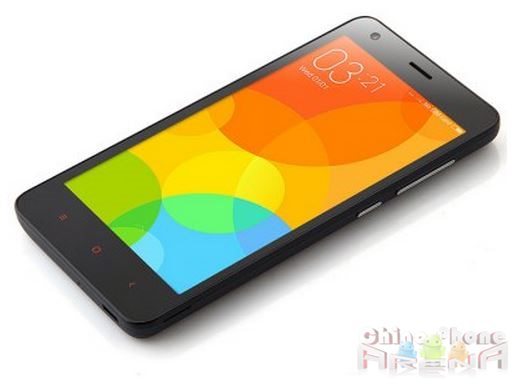
Without further ado, we have entering from stage right: Xiaomi Redmi 2 Prime. While the original Red Rice sported an MTK SoC, Xiaomi Redmi 2 Pro / Prime will feature Qualcomm MSM8916. Also known as Snapdragon 410, this SoC has a quad-core 64bit CPU with each core clocked at 1.2GHz. The GPU is Adreno 306.
I really like a couple things about the Xiaomi Redmi 2 Pro. First is the size; while most phones are getting bigger and bigger, the Xiaomi has seen fit to release the Redmi 2 Pro with a display size of 4.7″. The resolution will be HD 720p, which looks great on a 4.7″ display, giving a ppi of 312.
In addition, the Xiaomi will have a big 2GB of RAM and 16GB storage. This is beyond generous for the selling point of the Xiaomi Redmi 2 Prime.
The cameras and battery are more reasonably specced for the price, being 8mp for the rear and 2mp for the front. While this sounds very low, the truth is that many China models report the interpolated resolution, not the optical resolution. The battery will be 2200mAh.
Great news for those in the Americas, the Xiaomi Redmi 2 Pro will carry 850/1900/2100 WCDMA. This makes it compatible with 3G most of the world, though in some European areas people may lament the lack of 900. Included for 4G/LTE is 1800/2600MHz. As always, please check your carrier’s frequency before purchasing.
See the Xiaomi Redmi 2 [email protected]
It doesn’t have a fingerprint scanner, or a giant battery, or a 1080p display, but not everyone needs or wants these things; a solid brand name, 2GB RAM, 720p, 4.7″ and an excellent price are the highlights of the Xiaomi Redmi 2 Pro.
Those looking for a budget phone, or even those looking for a new phone in general should have this mobile on their shorty list.
Xiaomi Redmi 2 Review
Xiaomi Redmi 2 Pro review style
The Xiaomi Redmi 2 Prime in terms of style, as it is out of the box, is about as plain as it gets. That’s not necessarily a bad thing though. The back piece is excellent at shrugging off prints, staying fresh and brand new looking even after handling it for hours.
It’s fairly square, with rounded corners, which gives the Redmi 2 Pro an additional plus in the style department.
The display size, as mentioned in the preview is 4.7″ and this makes it one of the very well-powered devices coming out these days from China under 5.0″. Indeed, the majority of them are 5.5″. As such, this makes it an especially interesting mobile.
Note, I will be using “Pro” and “Prime” interchangeably throughout the review. They both refer to the same phone — that is, the 2GB/16GB version of the Xiaomi Redmi 2.
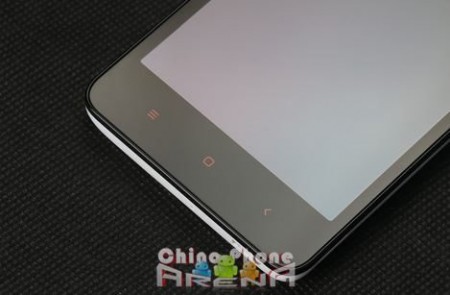
In contrast to most mobiles I usually review, the notification LED is at the bottom of the phone. It’s also small and of the pulsing type, which gives the physical design of the phone further attraction; those who read Gizbeat often know I’m generally not a fan of notification lights, but the pulsing style, as opposed to blinking on and off, is rather soothing and adds a touch of class.
The Xiaomi Redmi 2 Prime also has backlit capacitive buttons. Interestingly, they change brightness according to the ambient brightness. That is, when indoors the capacitive lights can’t be seen, but when stepping into better lit surroundings they become brighter as light increases. This seems to fly in the face of logic, but I find it cool none the less.
Xiaomi Redmi 2 Prime review display LCD
The display on the Redmi 2 Pro is OGS IPS 4.7″@720p. This gives a crisp ppi of 312. 720p on 4.7″ really does look good. The LCD according to official Xiaomi is made by AUO or Sharp (depending on varient). AUO and Sharp are both great display manufacturers; good enough in fact to have both produced displays for iPhones.
Viewing angles are great. There’s minor color and contrast changes from very extreme angles, but not in the washed-out type effect you get with TN panel displays. The display remains entirely legible and crisp looking from any angle.
Colors are very strong with moderate pop and whites are very good; overall a great looking display.
Xiaomi Redmi 2 Prime review OS
The OS on the Redmi is MIUI 6, which is based on Android 4.4.4. MIUI 7 should be released this week, but this is a minor update as it’s still based on 4.4.4. Those of you clamoring for MTK Lollipop, take note. Many major manufacturers still haven’t upgraded to Lollipop, yet MTK has been on the Android 5 tip for quite awhile already.
Still, it’s really neither here nor there. While it’s always nice to have the latest, Android 4.4.4 is a great OS. Very quick and smooth on the Xiaomi and bug free. There were no force closes, Play Store is installing and updating apps without issue. The Redmi 2 Pro is deep sleeping no problem.
There are several what I consider junk apps included on the Xiaomi Redmi 2 Pro. These are DCShare, Baidu Browser, Clean Master, DU Speed Booster, Magic Photo, Security, Touchpal, Weather. A fairly hefty list. They don’t really affect the phone my use of the phone, but are part of the System, so can’t be uninstalled without rooting. A fairly moderate OCD tickler for those of you prone.
I should also note here that there is a dizzying array of settings options in MIUI, probably more than in standard Android. I’ve included some screenshot examples. There’s also a guest mode which allows you to let a friend borrow your phone without being able to get into your private data.
Various MIUI themes and fonts can also be installed for free through Xiaomi theme and font shop.
Xiaomi Redmi 2 Pro performance / RAM / ROM storage
Xiaomi Redmi 2 Pro Antutu score is about par with the MT6735, which makes sense, as most MT6735 SoC devices are similarly priced to the Xiaomi Redmi 2 Pro. As mentioned, the OS is very smooth, both transition wise and in regards to quickness.
Storage on the Redmi 2 Pro is 16GB. The storage that’s left over after the OS takes up it’s space is all relegated to one partition is 14GB. After installing my standard array of testing and general use apps there’s now 12GB free, which is plenty to install many hundreds of apps. The Redmi 2 Pro is also SD expandable up to 32GB TF card according to Xiaomi official.
RAM on the Redmi 2 Prime is 2GB. Background app management is excellent, holding many apps in memory. Even hours later, apps previously opened are bam right there ready to go. This is one of the benefits of 2GB+ of RAM and it’s great to see the kernel tuned to hold apps in memory until memory begins to run low.
For the extra $12 bucks, I’d recommend the 2GB Pro version
Note there is also a 1GB/8GB version of the Xiaomi Redmi 2. For the extra $12 bucks, I’d recommend the 2GB Pro version because of the excellent background app management and doubling of storage to 16GB. If you don’t mind background apps falling out of memory, you don’t need space for many hundreds of apps, and you want to save $12, the 1GB/8GB version will easily suffice.
Xiaomi Redmi 2 Pro frequency support
The Xiaomi Redmi 2 has several different versions:
- 4G Network : FDD-LTE (B1 / B3); TDD-LTE (B41: 2555-2575 MHz)
- 3G Network : WCDMA (900 / 1900 / 2100 MHz)
- 2G network : GSM (900 / 1800 MHz)
- 4G Network : FDD-LTE (B1 / B3); TDD-LTE (B41: 2635-2655MHz / 2555-2575 MHz)
- 3G Network : CDMA (2000 / EVDO Rev.A 3G); WCDMA (850 / 1900 / 2100 MHz)
- 2G network : GSM (900 /1800 / 1900MHz); CDMA1x
- 4G Network : TDD-LTE (B38 / B39 / B40 / B41: 2555-2655 MHz); FDD-LTE (B3 / B7)
- 3G Network : TD-SCDMA (1900 / 2100 MHz); WCDMA (850 /1900 / 2100 MHz)
- 2G network : GSM (900 / 1800 / 1900 MHz)
There is also a Xiaomi Redmi 2A which carries the Leadcore L1860C. Leadcore is an SoC created by Xiaomi and is a less expensive variant of the Redmi 2 Pro.
The one tested in this review is the Xiaomi Redmi 2 Prime / Pro HM2014813 variant.
The Xiaomi Redmi 2 Pro I tested has 850/1900/2100 WCDMA, which gives it solid 3G capabilities for the Americas and most of the world. It does however lack 850 GSM and 900 WCDMA. This should not be an issue for the vast majority of users in the world, but if you have some questions, you can join our discussion to ask questions or add your comments.
Xiaomi Redmi 2 review camera images pictures samples
The camera on the Redmi 2 Pro is OV8865. This is a true 8MP sensor with BSI-2 (back side illuminated) technology. The sensor size is 1/3.2″ which is fairly typical for recent mobile phones. In theory, the lower density of pixels and BSI tech should provide slightly better low-light images than a similarly sized 13mp non-BSI sensor. Apple, with their recently released iPhone 6 has taken a similar route by using an 8mp sensor.
From Omnivision:
OmniVision’s OV8865 is a low-power high-performance 8-megapixel camera solution for next-generation smartphones and tablets. Utilizing an improved 1.4-micron OmniBSI-2™ pixel, the OV8865 delivers best-in-class pixel performance in a smaller, more power efficient package compared to the previous generation OV8835 sensor.
I found the pictures from the Redmi 2 Pro to be quite good. The sensor seems to resolve it’s full 8mp well (take a look at the closeup flower), and I’d say in many cases 100% crops remain digitally usable. Printing uncropped or mildly cropped medium-sized prints should fair well, and smaller prints even with moderate cropping should come out good too.
As with the recently reviewed Lenovo K3 Note, I was forced to take many of the images when the sun was covered by clouds. This isn’t necessarily a bad thing because it gives us a chance to see what the sensor can do in less than optimal lightning.
[flickr_set id=”72157657386116621″]
The first few images were taken with Google Camera (tree against sky, cat, driveway), and the last few taken with Xiaomi’s native camera app which seem to have added a bit of strong, but not necessarily unpleasing color.
The last three images are an example of Xiaomi Camera’s HDR with the Redmi 2 Pro. The first image too dark, the second image too bright, the third image just right. This was taken handheld; it came out quite good, without too strong of a processed look, and I think and shows HDR with this mobile is a solid option when the situation calls for it.
As usual, the images are completely unprocessed except for cropping and resizing.
Xiaomi Redmi 2 review speaker mic earpiece
The external speaker on the Xiaomi Redmi 2 Pro is above par, putting out plenty of loudness with clarity and some decent depth.
The earpiece and mic both working without issue and provided beyond enough loudness for myself to be heard and to hear the other person clearly, even when making a call next to a busy highway.
Xiaomi Redmi 2 Pro review components
- The Redmi 2 Pro’s OTG and working without issue.
- Compass working no problem
- GPS is excellent, cold locking withing seconds and maintaining high-30’s to low-40’s SNR
- WiFi signal strength is excellent, maintaining a strong, fast connection at 130ft / 40m
- Also included is a gyroscope, which often isn’t in phones at this price point, so it’s very nice to see here. The light sensor is sensing various levels of light and appropriately adjusting screen brightness.
Xiaomi Redmi 2 Pro accessories
Beyond the fact that the Redmi 2 Pro is a very solid mobile at an excellent price point, due to Xiaomi being a fairly mainstream international brand there are a lot of part replacements and accessories available, including tough protectors, hardened glass screen protectors, flip cases, and some great looking aluminum-sided glass-backed pieces that replace the original, as well as original styled matte back pieces in an array of colors.
This may sound like a minor bonus, but for those of you who are looking for a slick looking mobile, you can easily transform the Xiaomi Redmi 2 Pro for just a few bucks. As well, you gain piece of mind knowing that parts will be available should the mic go bad for example, or the phone dropped and LCD cracked.
Xiaomi Redmi 2 review battery charging and onscreen time
Charging of the Redmi 2 Pro’s 2200/2265mAh battery takes 2 hours to 90% and an additional 30 minutes from 90%-100. The Redmi 2 Pro has Qualcomm’s Quick Charge 1.0 which should enable 5V/2A charging, however only a 1A Xiaomi charger was included with the Redmi 2 Pro, so at this point not possible to test if there’s a difference in charging times with a proper 2A Quick charger.
See the Xiaomi Redmi 2 [email protected]
Running a 720p video over WiFi through YouTube with brightness set at 140 lux gave us six hours of onscreen time. This is an excellent result due partially to the smallish display.
| Conclusion Summary | ||||||||
|---|---|---|---|---|---|---|---|---|
|
|
|||||||
Note the “SoC power” parameter in the rating. This is there just to let you know that while the Redmi 2 Pro SoC is very capable and runs Android very smoothly (indeed very little difference, if any can be noticed between Android quickness with this mobile and a mobile that scores 45k), and is capable of playing complex 3D games smoothly, it’s not a powerhouse that’s going to run Antutu rings around the latest flagship or render video (eg, editing and combining video clips etc..) as fast as higher powered machines.
The Xiaomi Redmi 2 Prime is a big winner; nearly perfect in terms of hardware and OS. A great all around mobile combined with an excellent price point.
If you’re looking for a smaller phone, put the Xiaomi Redmi 2 Pro at the top of your shortlist.






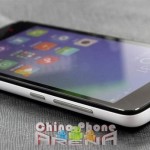
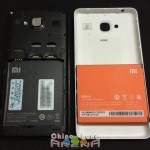
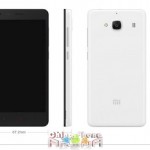
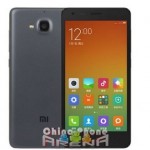
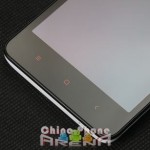

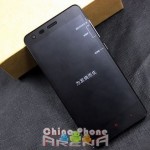
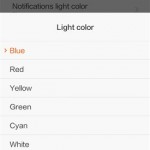

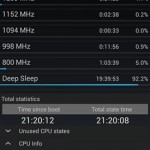


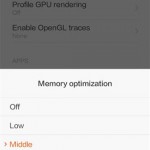


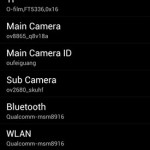


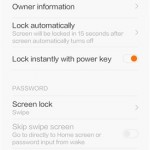
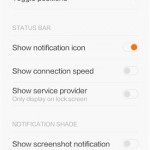
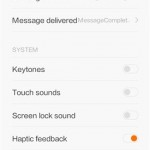
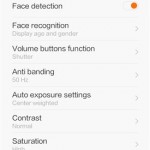

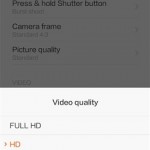


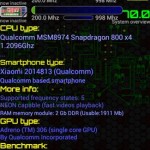
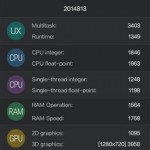
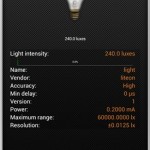


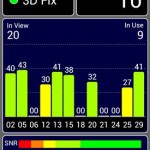


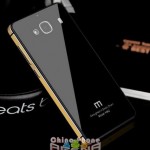

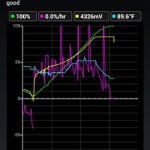
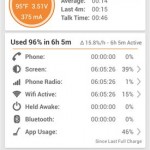

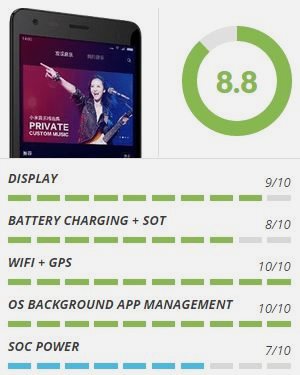
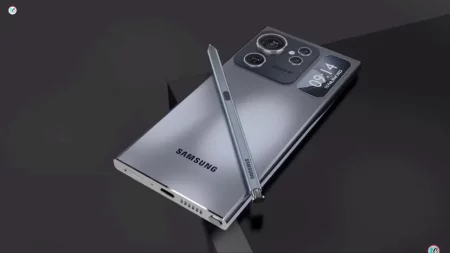
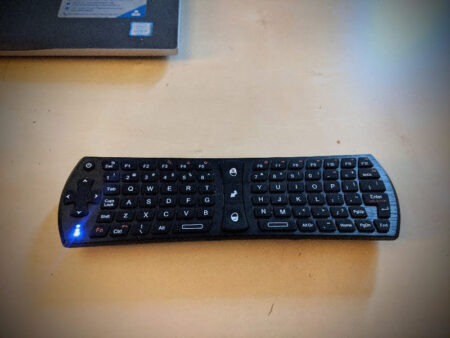
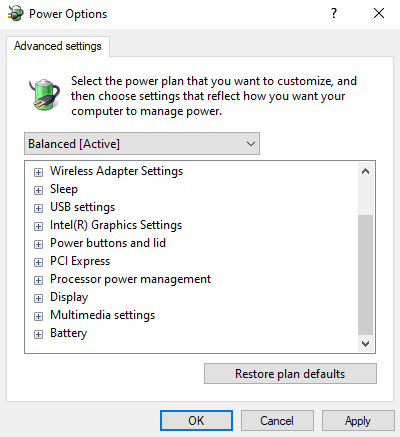
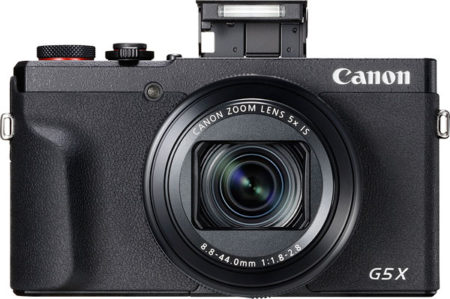


Would this work with at&t voice service in the USA without the 850 gsm band? Thanks.
Hello jh, yes, voice works over 3g as well. Should be no problem.
Thanks!
Picked three of these up for my sisters and mother based on your review. Excellent suggestion. Very nice phone for the price. Great battery life, snappy UI. I really enjoy my meizu m2 note, but these are making me want to pick up a Xiaomi Redmi note 2. Keep up the good reviews
Hello Jh1,
Thanks much for the feedback. The Redmi 2 has been my main phone for a few weeks now; great all around components, and the compact size with decent battery life is a big plus.
Will have a Redmi Note 2 review coming up within a couple weeks.
Regards
Excellent! Looking forward to reading that review. I’m curious what kind of battery life the helio x10 is getting with MIUI 7. My m2 note gets about 6-6.5 hours screen time on average. Think it would get more except Flyme drains about 2% per hour on standby. Hoping the redmi note 2 is at 6+ as well
Hello JH,
I expect it to get around 6 with my standard test.
Is your M2 deep sleeping okay?
6 hours wouldn’t be too bad. My M2 note is deep sleeping without issue, so I must be one of the lucky ones. Currently on Flyme 4.5.3a.
Will this work on aws band?
Hello, according to official Xiaomi and scattered user reports, the Xiaomi Redmi Note 3 Pro does have AWS, as well as B4 LTE:
http://www.chinaphonearena.com/forum/Thread-Redmi-Note-3-Pro-WORKS-on-T-Mobile-LTE
That review is also available from the main review hub here: http://www.chinaphonearena.com
Note, I have not personally confirmed, but it is part of the Redmi Note 3 Pro official specs.
The standard Redmi Note 3 with MTK SoC does not have AWS.